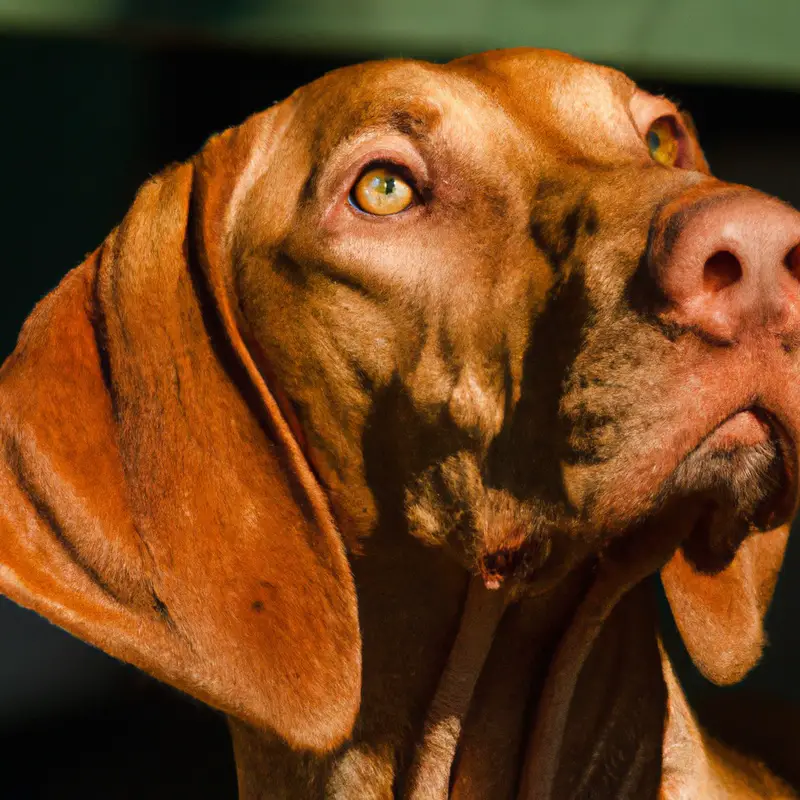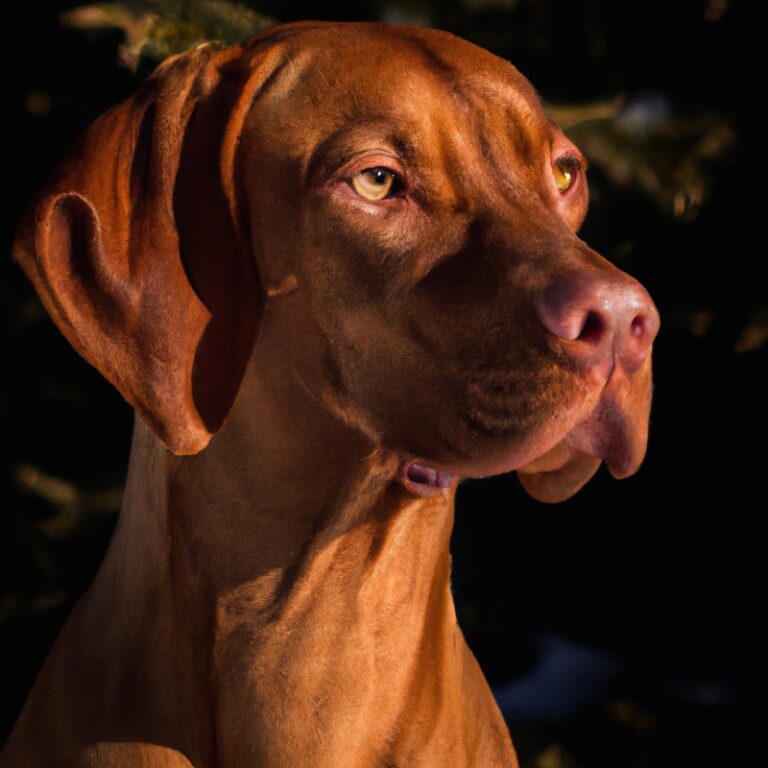What Are Some Potential Signs Of Vizsla Anxiety And How To Ease Their Stress?
Key Takeaways:
- Excessive barking and destructive behaviors can be potential signs of anxiety in Vizslas.
- Providing a consistent routine and plenty of physical exercise can help alleviate Vizslas’ anxiety.
- Training and positive reinforcement techniques can effectively reduce stress in Vizslas.
- Creating a calming environment and using interactive toys can help Vizslas cope with anxiety.
Hey there! Are you a proud Vizsla parent who wants to ensure that your furry friend is living their best, stress-free life? Well, you’ve come to the right place! Today, I want to talk to you about a topic that hits close to home for me: Vizsla anxiety.
As an experienced Vizsla owner and enthusiast, I’ve witnessed first-hand the toll that anxiety can take on these incredible dogs.
But fear not! In this article, I’ll help you understand the potential signs of Vizsla anxiety and share some valuable tips on how you can ease their stress and make sure they’re living their happiest, most balanced lives. So, let’s jump right in!
| Potential Signs of Vizsla Anxiety | How to Ease their Stress |
| Pacing | Establish a routine and provide regular exercise |
| Excessive barking | Engage in stimulating activities and provide mental enrichment |
| Restlessness | Create a calm environment and offer a comfortable space |
| Aggression or irritability | Avoid triggering situations and use positive reinforcement training |
| Tail tucking | Offer reassurance and avoid punishment |
| Excessive licking or chewing | Provide appropriate chew toys and active play time |
| Loss of appetite | Ensure a balanced diet and consult a veterinarian if necessary |
| Excessive panting | Provide access to cool and comfortable areas |
Understanding Vizsla Anxiety
Recognizing the Signs of Vizsla Anxiety
Recognizing the Signs of Vizsla Anxiety:
- Excessive Barking and Whining: Vizslas may bark excessively or whine when they’re anxious. Pay attention to changes in their vocalization habits.
- Restlessness and Pacing: If your Vizsla seems unable to settle down and constantly paces around, it could be a sign of anxiety.
- Destructive Behavior: Anxious Vizslas may chew furniture, household items, or even their own paws as a way to cope with their stress.
- Trembling or Shaking: Watch out for trembling or shaking, which can indicate that your Vizsla is feeling anxious or fearful.
- Avoidance or Hiding: An anxious Vizsla may try to hide or avoid certain situations or people, seeking a safe space where they feel more secure.
- Excessive Licking or Panting: If your Vizsla excessively licks their paws or pants even when it’s not hot, it could be a manifestation of anxiety.
- Changes in Appetite: Anxiety can cause a loss of appetite or conversely, an increase in food consumption. Keep an eye on any major changes in your Vizsla’s eating habits.
Remember, every Vizsla is unique, and signs of anxiety can vary. If you suspect your Vizsla is anxious, consult with a veterinarian or certified dog behaviorist for guidance and support.
Physical Signs of Vizsla Anxiety
Physical signs of Vizsla anxiety can include excessive panting, pacing, trembling, and salivating.
They may also exhibit restlessness, such as constantly getting up and lying back down or unable to settle.
Some Vizslas may chew or lick excessively, often targeting their paws or tail.
Another common physical sign is decreased appetite or sudden weight loss.
Keep an eye out for these signs and consult with a veterinarian for help in easing your Vizsla’s anxiety.
Behavioral Signs of Vizsla Anxiety
Vizslas are known to be sensitive dogs, and anxiety can be a common issue for them.
Here are some behavioral signs that may indicate anxiety in Vizslas:
- Excessive barking or howling, especially when left alone.
- Restlessness and pacing around the house.
- Destructive behavior, such as chewing furniture or digging.
- Excessive licking or grooming.
- Trembling or shaking.
- Trying to escape or finding hiding spots.
- Difficulty settling down and constantly seeking attention.
If you notice any of these signs in your Vizsla, it’s important to address their anxiety and help them feel more relaxed and secure.
Consulting with a professional trainer or veterinarian can provide valuable guidance and techniques to ease their stress.

Common Triggers for Vizsla Anxiety
Loud Noises and Thunderstorms
Loud noises and thunderstorms can cause anxiety in Vizslas. Signs of anxiety may include shaking, pacing, panting, and hiding.
To ease their stress, create a safe space for your Vizsla during storms, such as a cozy room with calming music or a comforting bed.
Consider using anxiety-reducing strategies like gentle massage or a ThunderShirt. Talk to your vet about potential medications or supplements that can help your Vizsla feel more relaxed during loud noises and thunderstorms.
Separation from their Owner
Separation from their Owner: Separation from their owner can be a major trigger of anxiety for Vizslas.
They are known for their strong bonds with their owners and thrive on human companionship.
When left alone for long periods, they can become stressed and exhibit signs of anxiety.
These signs may include destructive behavior, excessive barking, pacing, and even house soiling.
To ease their stress, gradually acclimate your Vizsla to being alone by starting with short periods and gradually increasing the duration.
Providing them with engaging toys, positive reinforcement, and creating a safe and comfortable space can also help alleviate their anxiety.
Changes in Routine or Environment
Changes in routine or environment can greatly impact a Vizsla’s anxiety levels. These dogs thrive on consistency and can become stressed when faced with sudden changes.
Some common triggers include moving to a new home, introducing new people or pets, or altering their daily routine.
To ease their stress, slowly introduce changes, provide a stable environment, and maintain a consistent routine. Providing a safe and familiar space for your Vizsla can go a long way in helping them feel secure and calm.
Easing Vizsla Anxiety
Provide a Safe and Comfortable Environment
To provide a safe and comfortable environment for your Vizsla, there are a few key things to keep in mind.
Firstly, ensure that their living area is secure and free from potential hazards.
This includes removing any toxic plants or chemicals that they may come into contact with.
Secondly, provide them with a cozy and comfortable bed to relax in.
Thirdly, give them plenty of mental and physical stimulation through regular exercise and playtime.
Finally, establish a routine and stick to it, as Vizslas thrive in structured environments.

Consistent Exercise and Mental Stimulation
Consistent exercise and mental stimulation are essential for keeping Vizslas happy and balanced.
Regular physical activity, such as daily walks or runs, helps them release energy and maintain a healthy weight.
Engaging their minds with puzzle toys, training sessions, and interactive games is equally important.
Providing a variety of activities, both physical and mental, will prevent boredom and reduce anxiety in Vizslas.

Using Calming Tools and Techniques
Using calming tools and techniques can greatly help ease Vizsla anxiety. Here are some effective ways you can calm your Vizsla:
- Provide a safe and comfortable space: Create a designated area where your Vizsla feels secure and relaxed. This can be a crate or a cozy spot with their favorite toys and bedding.
- Use calming aids: Consider using calming aids such as pheromone diffusers, calming sprays, or calming supplements specifically designed for dogs. These products can help reduce anxiety and promote a sense of calm.
- Engage in calming activities: Incorporate regular exercise and mental stimulation into your Vizsla’s routine. Physical activity and mental enrichment can help decrease anxiety and keep your dog’s mind focused.
- Practice relaxation techniques: Teach your Vizsla relaxation exercises like deep breathing or basic obedience commands that promote calmness. Reward them with treats when they demonstrate relaxed behavior.
- Seek professional help if needed: If your Vizsla’s anxiety persists or worsens, consult with a veterinarian or a professional dog trainer specialized in anxiety-related behaviors. They can provide personalized guidance and suggest additional strategies to manage your dog’s anxiety.
Remember, all dogs are unique, and what works for one Vizsla may not work for another. Patience, consistency, and a gentle approach are key when using calming tools and techniques to ease your Vizsla’s stress.
Seeking Professional Help
Seeking professional help is an important step in addressing your Vizsla’s anxiety.
A veterinarian or animal behaviorist can provide valuable guidance and support tailored to your dog’s specific needs.
They can help identify the underlying causes of anxiety and develop a personalized treatment plan.
Additionally, they may recommend techniques such as desensitization, counter conditioning, and medication if necessary.
Remember, seeking professional help is essential in ensuring your Vizsla’s well-being.
Frequently Asked Questions about Vizsla Anxiety
How do I differentiate between normal Vizsla behavior and anxiety?
Differentiating between normal Vizsla behavior and anxiety can be challenging, but there are a few key indicators to look for. Pay attention to excessive whining, trembling, panting, and restlessness, as these could be signs of anxiety.
Additionally, destructive behavior, unusual aggression, and constant need for attention may also indicate anxiety.
If you suspect your Vizsla is anxious, it’s important to consult with a veterinarian or a professional dog trainer who can provide guidance on easing their stress.
What if my Vizsla’s anxiety continues to worsen despite my efforts?
If your Vizsla’s anxiety continues to worsen despite your efforts, it may be time to consult a professional, such as a veterinarian or a certified dog behaviorist. They can help identify the underlying causes of your Vizsla’s anxiety and provide guidance on the best strategies to manage it.
Remember, seeking professional help is not a sign of failure, but rather a proactive step towards ensuring your dog’s well-being.
Final Verdict
Understanding and recognizing the signs of Vizsla anxiety is crucial for providing the necessary care and support to our furry friends.
By being attentive to both physical and behavioral signs, we can intervene early and prevent their stress from escalating.
Creating a safe and comfortable environment, consistent exercise, and mental stimulation are essential in easing their anxiety.
Additionally, utilizing calming tools and techniques and seeking professional help when needed can greatly alleviate their stress levels.
Remember, your Vizsla’s well-being is in your hands, and with the right strategies, you can ensure their happiness and peace of mind.








